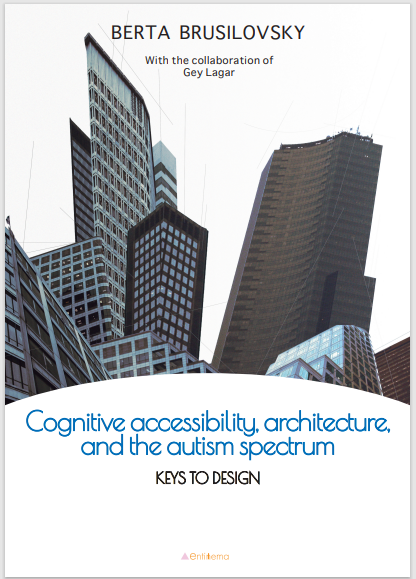Autism and built environment: Centre for Universal Design Australia

 City life can be noisy, busy and confusing at the best of times. People with neurodiverse conditions such as autism can find this level of stimulation distressing in the built environment. People with dementia and mental health conditions can also find city life and streets distressing. The end result is it becomes easier to stay home as much as possible. This is counter to our need to be physically active and to get out and about.
City life can be noisy, busy and confusing at the best of times. People with neurodiverse conditions such as autism can find this level of stimulation distressing in the built environment. People with dementia and mental health conditions can also find city life and streets distressing. The end result is it becomes easier to stay home as much as possible. This is counter to our need to be physically active and to get out and about.
Children with autism can find urban noise and activity distressing. To discover the specific issues, researchers carried out an observational study of children, with their parents, walking from a transport stop to a park. They identified different elements that pose potential issues for the children. From this, they developed potential design solutions.
“It is essential that planners and policymakers change their neurotypically driven mindset of city planning and design.”
While the noises of transport and street activity can be loud, the park is expected to be a quiet place of retreat. But this is not always the case. Mowers, leaf blowers, and excited children raise the decibel level considerably. So knowing when the park will be quiet is therefore very helpful.
Two routes were the subject of the observational study. Both began at a public bus station and ended at an open green space in the city. The aim was to identify aspects that might inhibit access to the park. The routes included common challenges; footpaths, roads and shopping areas. Both routes were approximately 1 mile (1.6km) in length and covered commonplace streetscapes.
Sensory challenges in the built environment
Not all autistic people have problems with sensory overload and those that do might not react to all senses. Parents need to be aware of the unexpected. Loud noises in the form of drilling machines, heavy trucks and police sirens, and flashing lights, for example. On the day the observations were made, it was sunny and bright – not optimal for those who are light sensitive. One the other hand there are those who find lack of light affects their visual acuity.
Apart from sensory issues, there were several others. Street clutter in the form of bins and sandwich boards on narrow footpaths. Traffic lights were a problem because there was no knowing when the lights would change. The solution is a countdown timer and clearer instructions on when it is safe to cross. Wayfinding guidance is also important because clear instructions are essential for feeling safe.
An uninterrupted, smooth and safe journey is what everyone wants. For autistic people it is essential for feeling safe and comfortable along their journey. The researchers provide detailed design interventions such as transition zones, road safety advice, and quiet spaces.
As with many things, design features essential for this group have benefits for everyone. For example, knowing when the park was going to have the noise of mowers and leaf blowers makes it more pleasant for everyone. And everyone appreciates a quiet space from time to time.
The title of the article is, Autism spectrum condition and the built environment. In the conclusions, the researchers say,
“The issue of accessibility for people with disabilities and autism spectrum condition (ASC) should become common knowledge to those working in the built environment sector. To do so, a design guide for creating inclusive cities and communities for people with disabilities, making specific reference to people with ASC, needs consideration at a strategic level, then implemented at a city and town level. Future regeneration projects should include these interventions and design principles in the planning stages and through to implementation.”
Architecture and autism
Berta Brusilovsky’s eBook, Cognitive accessibility, architecture and the autism spectrum. Keys to design is the last in her series on the topic. The promotional material indicates a basic translation to English, but the book itself is in good English.
Brusilovsky covers the neurobiology in terms of senses, perception, cognition, attention and spatial development. This is followed by design practice using examples in different contexts. Playspaces, classrooms, cinemas, and libraries are discussed in more detail.
The book deals with design and architecture: the route of spatial recognition from the perspective of autism. The objective is to create a framework to approach the design of environments and buildings, in order to facilitate spatial development in everyday life.
https://universaldesignaustralia.net.au/autism-and-built-environment/